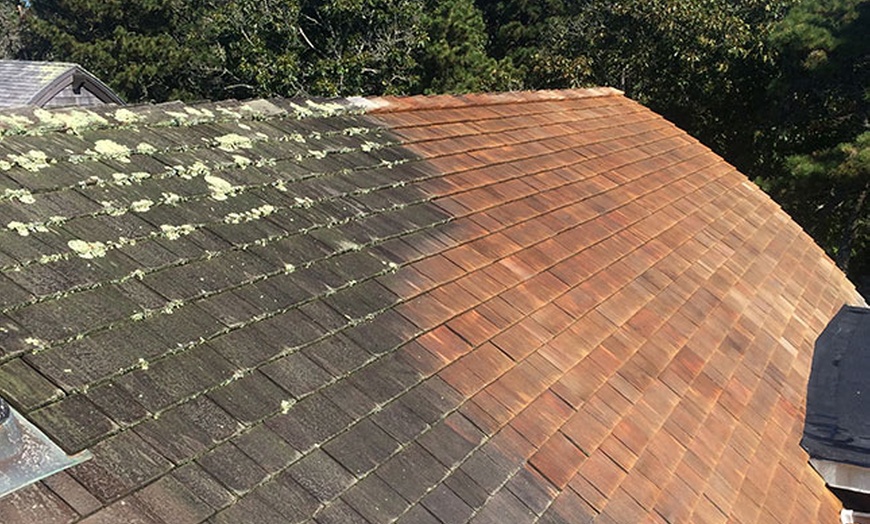
If you’ve ever looked up at your roof and noticed dark streaks or splotches that seem to spread over time, chances are you’re dealing with black algae—specifically, a strain called Gloeocapsa magma. It’s unsightly, reduces curb appeal, and often leads homeowners to ask: Can pressure washing get rid of it?
The answer? Not safely. ❌ But don’t worry—there is a better way. Let’s break it down.
🧪 What Is Black Algae?
Black algae is a hardy type of bacteria that thrives in humid environments. It feeds on the limestone filler commonly found in asphalt shingles, especially on shaded parts of your roof. Over time, it creates streaky black stains that make your roof look dirty and older than it really is. 😩🏚️
And it’s not just about looks—black algae can reduce your roof’s energy efficiency by absorbing more heat, making your home warmer and increasing cooling costs. 🌡️💸
🚫 Why Pressure Washing Is a Bad Idea for Roof Shingles
Even though pressure washing seems like a quick fix, it can do more harm than good when it comes to asphalt shingles. Here’s why:
- 💥 Too much pressure can strip off the protective granules that cover each shingle. These granules help deflect UV rays and protect the shingle’s integrity.
- 💧 High-pressure water can force moisture under the shingles, leading to leaks and rot.
- 🧱 It may void your roof warranty. Many manufacturers clearly state that using a pressure washer on shingles will cancel your warranty.
So, while pressure washing can technically remove black algae, it’s not recommended for the delicate surface of roof shingles. It’s like using a sledgehammer to open a peanut—overkill and messy.
✅ The Safer Alternative: Soft Washing
The best way to eliminate black algae is through a method called soft washing. It uses low pressure and special cleaning solutions to safely break down and kill algae, mold, and mildew.
🔧 How Soft Washing Works:
- A gentle spray of algaecide or bleach-based cleaner is applied using a low-pressure sprayer.
- The solution is left to dwell for 15–30 minutes to allow the chemicals to kill the algae at its root.
- The roof is rinsed with low-pressure water, leaving the shingles intact but algae-free.
Soft washing not only removes the stains but also kills the algae spores, preventing immediate regrowth. ✨🌿
Browse Amazon Here For Soft Washing Equipment And Accessories
🧴 DIY or Hire a Pro?
If you’re comfortable working on your roof, there are commercially available soft wash kits and cleaning solutions designed for homeowners. But because of the height, slippery surfaces, and chemical handling involved, most people are better off hiring a professional roof cleaning company.
The cost typically ranges from $300 to $600, depending on the size and slope of your roof. It’s a worthwhile investment to extend the life of your shingles and keep your home looking sharp. 🏡🧼
💡 Preventing Algae in the Future
Once your roof is clean, you can keep it that way by following a few maintenance tips:
- 🪵 Trim back overhanging tree branches to reduce shade and allow sunlight to dry the roof.
- 🌬️ Improve attic ventilation to reduce humidity buildup.
- 🔩 Install zinc or copper strips near the ridge of the roof. When it rains, metal ions run down the roof and inhibit algae growth.
- 🧽 Regular roof inspections and cleaning every few years will catch early signs of buildup before it becomes a problem.
📌 Final Verdict
No, you should not pressure wash your roof shingles to remove black algae. While it might seem effective in the short term, the damage it can cause far outweighs the benefit.
Instead, opt for soft washing, either DIY or through a professional service, for a safe, effective way to eliminate stains and restore your roof’s appearance. The right approach not only keeps your home beautiful but protects one of your most important investments for years to come. 🏠☀️✅
Browse Amazon Here For Soft Washing Equipment And Accessories






